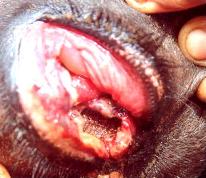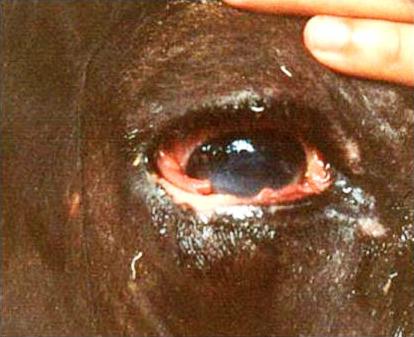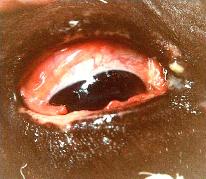Clinical Evaluation of Negasunt of Maggot Wounds in animals
|
   |
Negasunt can safley and effectively be used as maggocidal and bactericidal agent in the dressing of maggot infested wounds with secondary bacterial complication in different animals.
Negasunt appears to have an antiinflammatory and chemical debridement activity in the management of wounds.
Negasunt can safely be used in he management of maggot infested wounds of certain sensitive areas like eye without any side effect.
Studies on the efficacy of Seabuckthorn (Hippophae sp.) on soft tissue repair with particular reference to cutaneous wounds, burns and gastric ulcers
|
 |
Seabuckthorn seed oil has better efficacy in the healing of cutaneous burn wound in calves as revealed by early shedding of burn eschar, lesser inflammatory reactions and more organized healing tissue. Application of seabuckthorn oil over incisional wounds helped in rapid gain of tissue tensile strength. Application of seabuckthorn ointment over aseptic full thickness excisional cutaneous wounds resulted in better and faster wound healing. The oral feeding of seabuckthorn seed oil has prophylactic value in the development of gastric erosions/ulcerations and also has therapeutic potential to aid in their healing.
Studies on intestinal obstruction of high altitude with special reference to prognostic, diagnostic and therapeutic aspects
|
 |
In proximal intestinal obstruction the prognosis is favourable if plasma chloride is not < 75 mEq/L, plasma potassium is not < 3.5 mEq/L and hematocrit is not > 40 per cent. Whereas in distal intestinal obstruction the prognosis is good if plasma chloride is not < 78.48 mEq/L, plasma potassium is not < 3.73 mEq/L and hematocrit is not > 42.87 per cent.
Increased ruminal fluid chloride (> 40 mEq/L) indicated outflow obstruction thus is an important prognostic factor.
Blood chloride concentration can serve as an important index for selection of fluid to be administered in both types of obstruction and should be maintained around 75mEq/L by giving ringer solution combined with potassium chloride.
To correct the hypochloraemia, Ringer’s solution combined with potassium chloride can be given and when the blood chloride level are restored optimally, normal saline and dextrose normal saline can be given for maintenance.
The clinical cases of intussusception in cattle presented with dehydration (PCV > 45 per cent), hypochloraemia (<78 mEq/L), hypokalemia (<3.5 mEq/L) and increased ruminal concentration (74 mEq/L) with severe abdominal distension, recumbency along with pregnancy had poor prognosis.
To avoid post surgical mortality and to improve the prognosis of clinical cases of intestinal obstruction during postoperative period, the supportive treatment should comprise of Ringer’s solution, potassium chloride, isotonic saline, dextrose normal saline, calcium borogluconate, antibiotics, corticosteroids and transfaunation with rumen microflora rejuvenators (rumen cud, rice gruel with treacle) and to prevent post-operative ileus, neostigmine can be added.
In majority of the clinical cases, intussusception of the distal intestine affecting caecocolic junction was observed and recorded primarily in the females and pregnant animals. Feeding of the Bamboo grass was found to be a major etiological factor.
Digital per rectal examination proved an important tool for diagnosing 80 % clinical cases of intestinal obstruction and exploratory laparotomy was performed to confirm it.
Prompt surgical intervention at following interval is needed for better post surgical prognosis of animals:
i. 24 hours in cranial strangulated jejunal obstruction.
ii. 3rd day in cranial simple jejunal and strangulated colonic obstruction.
iii. 6th day in simple colonic obstruction.
Change in the colour of the peritoneal fluid from normal straw to deep yellow served as an important indicator for both proximal and distal intestinal obstruction
Therapeutic evaluation of Seabuckthorn (Hippophae sp.) Oil and other medicines in healing of gastric ulcerations and erosions (GUE) in dogs |
Long term administration of dexamethasone results in development of severe degree of non-fatal gastric ulcerations and erosions in dogs
The overall therapeutic efficacy of Seabuckthorn seed oil in dexamethasone-induced gastric ulcerations and erosions in dogs is better than famotidine, lansoprazole, misoprostol and sucralfate.
The restoration of gastric mucous layer was fastest in famotidine group followed by seabuckthorn oil group.
Lansoprazole, sucralfate, misoprostol, famotidine and seabuckthorn oil are safe to administer in dogs.
Faecal occult blood test is highly sensitive in detecting sub-clinical gastric ulcerations and erosions in dogs.